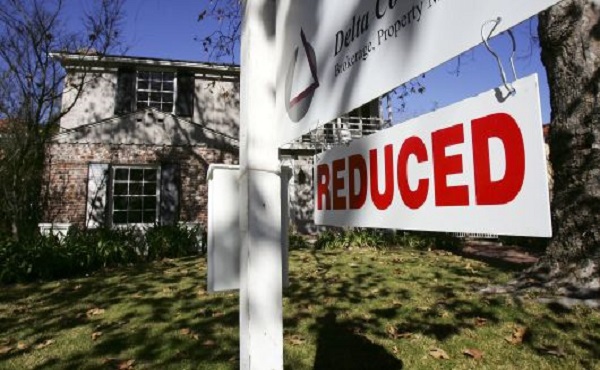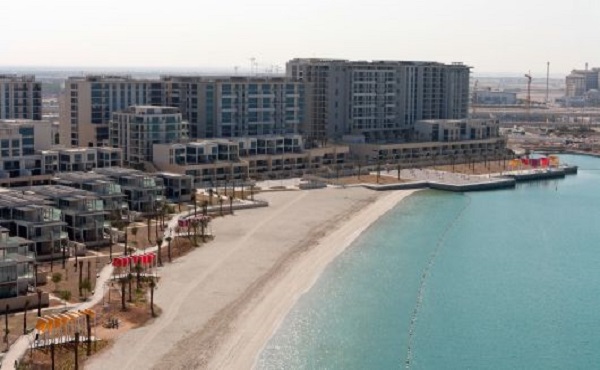Global real estate booms again, and the big housing bargains are outside the US
In 2016, 18 of the 23 European housing markets boomed, according to the research firm Global Property Guide.
Global real estate funds are turning in double-digit performance this year.
Yields are higher on overseas real estate ETFs than on U.S.-focused property funds.
Global real estate stocks have much more room for price growth.
The Vanguard Global ex-U.S. Real Estate ETF has a price-to-earnings ratio of 13.45. The U.S. real estate fund counterpart from Vanguard has a price-to-earnings ratio of 34.17.
After years of being hammered, housing prices in Europe — and Asia, too — are finally surging.
And they're rising faster than in the United States, where the housing market has been hot, even in faraway places like Iceland.

Yet investors are mostly sticking to equities that invest in the U.S. residential housing market, which is a microcosm of the provincial approach investors take when it comes to investing in stocks. And at a time when investors are flocking to international equity bets overall as a way to find better valuations than in the U.S. market.
With international real estate, investors are forsaking big income bets, giving up higher yields and better returns at a lower price-to-earnings ratio. Last year 18 of the 23 European housing markets boomed, according to the research firm Global Property Guide, and show no signs of slowing. New Zealand, China and Canada were also strong.
"There is a real opportunity here," said Duncan Rolph, a managing partner at Miracle Mile Advisors in Los Angeles. "International real estate funds are priced less than U.S. [funds]. Yet they pay dividends over 4 percent."
The Vanguard Global ex-US Real Estate ETF (VNQI) fund is the best example. The fund currently has a 12-month yield of 4.58 percent, according to Morningstar, and has notched a price return of 12.12 percent as of May 19. And the expense ratio is a measly 0.15 percent.
Price to prospective earnings ratios of real estate ETFs
Vanguard Global ex-US Real Estate: 13.45
iShares International Developed Property: 14.35
iShares Europe Developed Real Estate: 12.40
WisdomTree Global ex-US Real Estate: 12.54
WisdomTree Global ex-US Hedged Real Estate: 12.59
Guggenheim China Real Estate: 10.24
Vanguard REIT ETF (U.S.): 34.17
(Source: Morningstar, data through 4/30/2017)
Most of the fund's $4.2 billion in assets are invested in developed markets in Asia and Europe. Japan, where housing prices in Tokyo rose 9.3 percent last year, is the largest country holding. By contrast, the massive $33.8 billion US-centric Vanguard REIT ETF (VNQ) price is nearly flat. "There's a lot of room for funds to flow internationally," Rolph said.
This low-risk Vanguard Global real estate fund is a favorite, said Todd Rosenbluth, senior director of ETF and mutual fund research at CFRA. "You're getting global diversification in developed markets," he said. "And many holdings in it are attractively valued." He doesn't rely on price-to-earnings metrics for this view, but generally noted that a bottom-up view of stock investing leads CFRA to be positive on broadly-based VNQI.
More from Global Investing Hot Spots:
China's big investment in SpaceX competitors
21st-century utopias to house 100 million
The billionaire who is saving Bethlehem
The nearly identical iShares International Developed Property ETF (WPS) has similar holdings to Vanguard Global ex-US. But assets are only $137 million and the expense ratio is higher at 0.48 percent. "You're getting similar country exposure at a higher cost," Rosenbluth said.
He suggested the iShares Europe Developed Real Estate (IFEU) ETF as a better alternative. It yields less at 2.5 percent, but it has had a 13.3 percent price increase this year. Most of the holdings are in the U.K., France and Germany, which provides a contrast to the Asia-centric real estate ETFs, Rosenbluth said. It's also relatively rare to find a European sector focus in ETFs. "If investors believe there's a rebound there, this is a good way to play it," he added.
The WisdomTree Global ex-US Real Estate ETF (DRW) has an even more appealing yield of 5.2 percent. It's much smaller — $80 million in assets — and the expense ratio is higher at 0.58 percent. But the fund has notched a 16.5 percent return so far this year.
The fund also has a few compelling twists, say experts. Though Hong Kong is the top country holding, nearly one-quarter of fund assets are invested in emerging markets like Mexico and South Africa. And the fund index is dividend-weighted based on real estate company cash payouts. These companies have $1 billion-plus market capitalizations. Country exposure is capped at 25 percent.
"We build our own index," said Chris Gannatti, associate director of research at WisdomTree Asset Management. "And so we think about diversification and liquidity."
As governments in India and elsewhere become more stable, investors should think about transitioning outside the US, he said.
There's also the WisdomTree Global ex-US Hedged Real Estate ETF (HDRW). It yields 5.19 percent. "The benefit is that it protects against currency downsides," Rosenbluth said. However, he adds, assets are only $2.7 million, meaning it's much less liquid as a trading vehicle than the other options in this space.
In the Asian market, China housing prices in Shanghai rose an eye-popping 21.3 percent last year. And the Guggenheim China Real Estate ETF (TAO) has had a blowout year so far, too, rising 22.8 percent. But Neena Mishra, director of ETF Research at Zacks Investment Research, worries that China real estate is in a bubble.
"There's a lot of speculation in China real estate," she adds. "So be apprehensive."
Rosenbluth said that CFRA analysts who cover many Chinese real estate stocks locally have sell recommendations on some in the ETF, including Henderson Land Development and China Overseas Land, both of which are top 10 holdings in TAO. While theses stocks have low P/E ratios, just like TAO, Rosenbluth said investors should also look at cash-flow metrics — the REIT industry uses funds from operations (FFO).
Last week Moody's downgraded China's credit rating based on the risk that there will be too much debt used to fuel the economy as China's growth rate slows.
"There are better places to invest," Rosenbluth said, adding that investors are paying a high price of 0.70 percent annually for the fund. He pointed back to VNQI, which is a much broader way to invest in global real estate that includes exposure to China but does not concentrate its bets there.
Mishra said analysts usually prefer to use cash flow and capitalization rates to value REIT stocks rather than P/E ratios alone. And there are many other factors that will influence price swings in specific markets around the globe. Currency is one: the British pound's fall after Brexit led to a rise in Chinese purchases of London properties since those properties became much cheaper in yuan. Macroeconomic policy also plays a big role: Japanese REITs may continue to go up due to massive purchases by the Bank of Japan and ultra-low interest rates, even though they look expensive.
"I think the main reason why investors should consider adding some international real estate exposure in their portfolios is the diversification benefits," Mishra said.
Rosenbluth said investors should consider making a move into global real estate funds because, "Prices are moving higher."
— By Constance Gustke, special to CNBC.com





